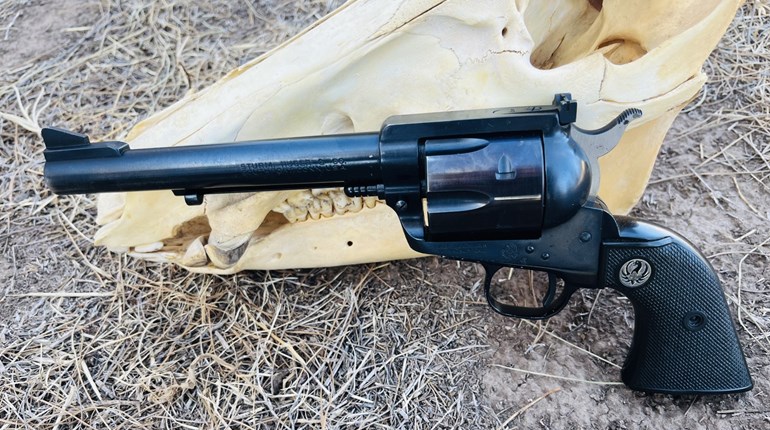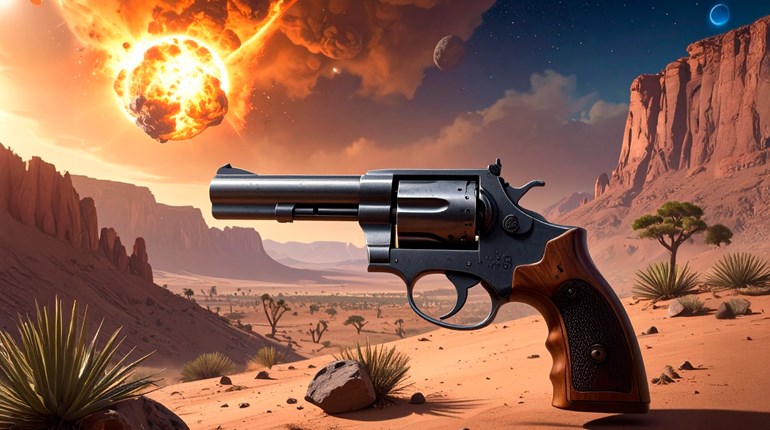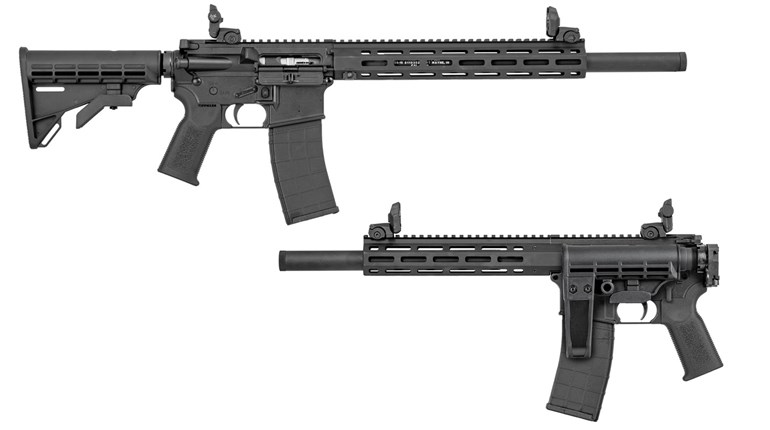
Careful consideration when selecting ammo and accessories like stocks and speedloaders can give those who prefer carrying a revolver a self-defense edge.
I have to admit that I am enjoying seeing many of today’s defensive shooters rediscovering the double-action revolver. Let’s face it: The revolver vs. semi-automatic debates are silly, and the armed citizen is well advised to select the defensive gun he or she shoots well and has confidence in. The DA revolver ought to be considered when anyone is searching for that truly personal defense gun.
There are still a bunch of us shooters kicking around who came from the era when the revolver was king. And, just like shooters have done throughout the ages, we developed little techniques and gimmicks that made our shooting more efficient. What follows are some of the things I have learned about managing the DA revolver. None of them are written in stone, but it would be a good place to start for the prospective revolver shooter.
To begin with, it is a good idea to stay away from revolvers that are extremely small and lightweight or those that are overly large and heavy. The little guns are easy to conceal, but can be quite difficult to shoot accurately and their recoil can be quite uncomfortable. By the same token, large, heavy handguns may be easier to shoot well but they create a concealment problem.
I’ve found that most people can get along very well with the medium-frame revolvers—something weighing 30 to 40 ounces. Guns in this category can be had with fixed or adjustable sights and barrel lengths that run anywhere from 2 inches to 4 inches. With a little thought and planning, these revolvers can be concealed relatively easily. My favorites are a pair of Smith & Wesson Model 19 revolvers with 2.5-inch barrels.
Without trying to start a cartridge debate, I will just say it is very difficult to beat such a handgun chambered for the .357 Mag. cartridge. In that chambering, the shooter can make use of everything from the low-velocity .38 Spl. target loads to .38 Spl. +P and right on up to the full-house magnum loads. In addition, the shooter has a huge selection of bullet weights and designs from which to choose, along with specialty loads like CCI’s .38 Spl. snake-shot cartridges. My guns generally stay loaded with one of the so-called FBI .38 Spl. 158-grain lead +P SWC hollowpoints. And, I carry extra ammo that includes snake shot and some magnum rounds should such be needed.
Where the new shooter needs to spend some time is in the selection of suitable stocks (which is the proper term for a revolver’s “grips”) for the defensive revolver. Stocks that fit the particular shooter are crucially important and a true aid to good shooting. Fortunately, firearm manufacturers have come a long way in providing good factory stocks. However, new shooters should not be afraid to experiment with various stock designs in order to find something that really suits them. I’ve had good luck with Pachmayr Grips, Altamont Grips and Eagle Grips, to name just a few.
In our personal-defense classes, we highly recommend the armed citizen carry at least one reload in addition to the defensive handgun. For revolver shooters, however, I suggest that it’s a good idea to carry at least two reloads, one for a speed load and another for a tactical reload.
Several companies manufacture speedloaders for many popular models of defensive revolvers. Again, as with revolver stocks, the shooter needs to experiment with several different speedloaders to find what works best for him or her. The shooter also needs to make sure that a particular speedloader is compatible with the stocks on the gun so they don’t interfere with the loading process. While there are a number of excellent speedloaders on the market, I started out with the HKS loaders and have never found a need to change.
When we have fired all the rounds in our revolver and we need to dump the empties, reload and get back into the fight, we use the speedloader. When we have fired just a few rounds and have the time and opportunity to top the gun off, we perform a tactical reload. This is where the speedstrip comes in handy. Simply a strip of soft nylon or neoprene, this gizmo holds a suitable number of cartridges that can be peeled off into the revolver cylinder. Speedstrips are a handy way to carry extra ammunition, too, and are way better than having loose cartridges in your pocket. Speedstrips are more easily concealed than speedloaders since they can lie flat in a pocket. I use Bianchi Speedstrips, although similar strips are available from other companies.
The biggest challenge in the successful use of the double-action revolver is managing the DA trigger pull. And the best way to do that is through lots of practice—both live-fire and dry practice. The more the shooter cycles the DA mechanism, the smoother it becomes and the stronger the muscles in their shooting hand becomes.
One of the biggest advantages to the DA revolver: it can be dry-fired without having to rack the slide (striker-fired pistols) or cocking the hammer (DA/SA or SAO semi-autos).
So, to recap: I sure envy the new shooters who have been introduced to the double-action revolver. No other defensive handgun is any more accurate or reliable. I wouldn’t part with mine; because we’ve had quite
a few adventures together over the years.




































